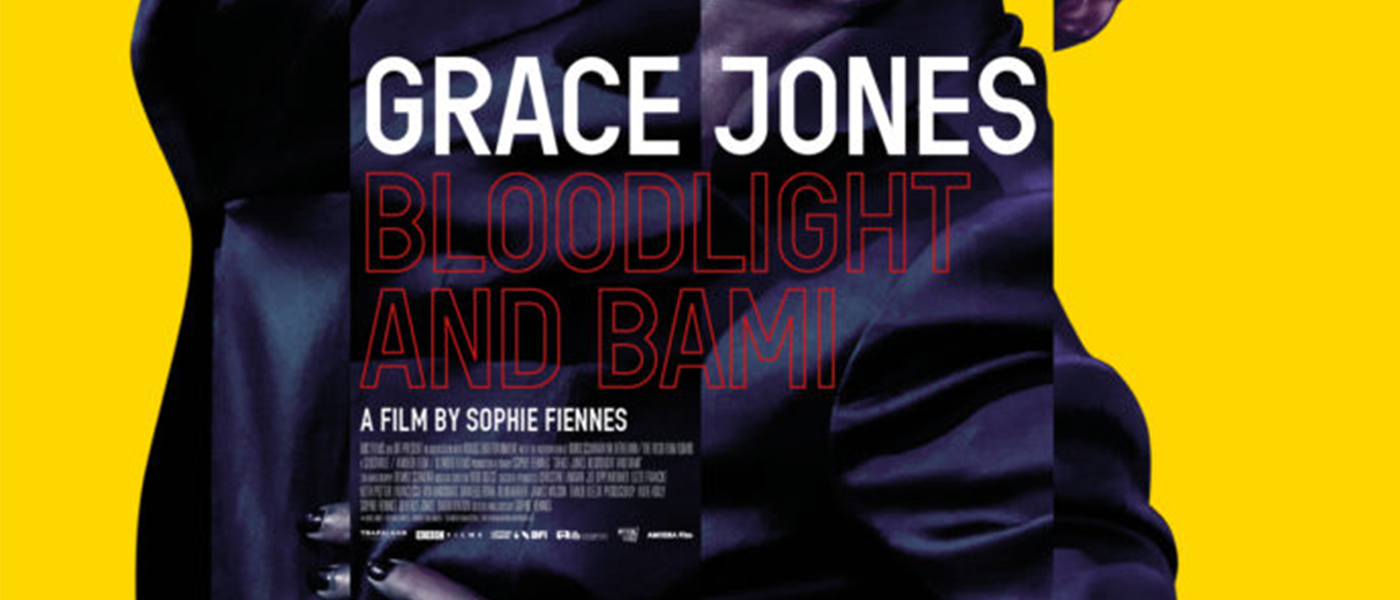Roses for Grace Jones: In Celebration of a Cultural Icon
By: Niki Igbaroola
A Review of Sophie Fennes’ Documentary Bloodlight and Bami
There is something in the way Fennes chose to shoot this documentary that melded perfectly, with Jones’ enigmatic nature. The light choices, for example, were both bright and warm, filling up the screen and serving, especially in the scenes shot in Jamaica, to compliment the layers within the layers of this woman whose music continues to transcend trend and genre across the world.
There is a moment, after Grace has swam in a lake in Jamaica, lit with orange hues that stays with you long after you have left the screen. It perfectly encapsulates, the pain growing up with a strict grandfather inflicted on Jones as a young, creative woman but also the ways in which her Jamaican heritage contributed to the artist she is. The scenes in Jamaica show Jones recollecting her past, with her son and niece in tow, perhaps as a shield, as she explores the grounds that haunt her still. Retracing her steps of childhood, she takes a rare trip to the church where her mother’s rendition of “His Eye is on the Sparrow” is a stirring reminder, that Jones’ talent comes from a place beyond her and is rooted in her blood. Jones’ visit to the church was pivotal in the film, as she had long vowed to never return to the structure that housed her abusive experiences growing up under the strict eye of her deeply religious step-grandfather, Mas P. In many ways this scene displays a restoration in Jones. A release of past traumas.
Her music; live performances interspersed between scenes of her travels, manage to perfectly capture the tone of her wildly fascinating life. To get the chance, through documentary to watch Grace Jones as a performer is a very different experience to seeing her in concert. This is because you are better able to engage with the nuances she brings to her performance. The way she fills up a vast stage space using only her voice and body – a body and face that brought her fame, long before the musical talent was recognised. Of course, it should come as no shock that her music reflects her life, but the symbiosis of both is almost eerie, reminding you that her music has always been about telling the truth rather than charting or fame. Grace Jones’ only competition has been herself and as such, she operates outside of the modus operandi other artists often fall into.
Ageing has done nothing to tamper the vivaciousness of Grace Jones as she mocks her only son Paulo, a model, whom she had with long-term collaborator, John Paul-Goude, for going to bed early the night before a shoot. In this call, we see Jones reminiscing about her club days in the 80’s where night outs often found her leaving the club to get straight to work in front of a camera in her modelling days. Throughout the documentary, Jones has a glass of wine or champagne in hand but can never be accused of unprofessionalism or disorderly conduct. Now do not get me wrong, Ms. Jones comes with a foul mouth as any sailoress out there and manages to party outrageously pre-and post-concert, but the respect she shows to everyone she encounters is a testament to her understanding of every aspect of the industry on which she has made her mark. That she does not want to offend anyone is clear but she takes not shxt when it comes to her image, sound and money.
Swearing brazenly all through her hotel suite whilst waiting on show organisers to send over modified contracts to her is a sustained and engaging scene, showing a woman who has learnt from past mistakes and will not be burnt again. Distinctly, this documentary makes no use of archival footage with Fennes choosing instead to feature images she herself has captured. The conversations around the past are therefore retrospective in nature. The audience meets Jones as she is presently and experiences her history solely from the perspectives she is comfortable confronting through the journey of this documentary. Whilst having a chance to experience Jones as she is now is illuminating, it disallows the documentary to become a survey of her past – presenting her stardom as a continuing force, there is a sense, as an audience member that you are getting a watered down version of her journey. We get to see the Jones beyond the vulnerability of mistakes and at peace with her past demons. She, thus, is somewhat untouchable and inaccessible: an aspirational figure.
Fennes focuses very pointedly on Jones’ physicality, zooming in on her lips as she slurps down seemingly endless platters of oysters – reiterating again, that Grace lives on a plain far above that of us mere mortals. Focusing on a person eating often inelegantly is supposed to be off-putting, but there is a beauty to Jones’ messiness and lack of self-awareness whilst on camera that like her music, reminds us that she has only ever sought to be real. This is reiterated in the repeated glimpses we get of her naked body, lean and muscular, womanly and otherworldly in its magnificence, at intervals through the documentary.
Bloodlight and Bami reminds you that Grace Jones is a mystery you cannot unravel, or perhaps Fennes simply couldn’t. True, her softer sides are touched on but as she switches from her a distinctly English accent, to fluent Patois and then to fluent French, you cannot help but be awed anew by her mind. You are left, wanting way more than you get from this documentary, wanting to break into her mind and learn all the secrets of her universe. Whilst, I wish and will always wish to know more about Ms. Grace Beverly Jones, I respect her right to mystery and unknowability whilst navigating public spaces.


